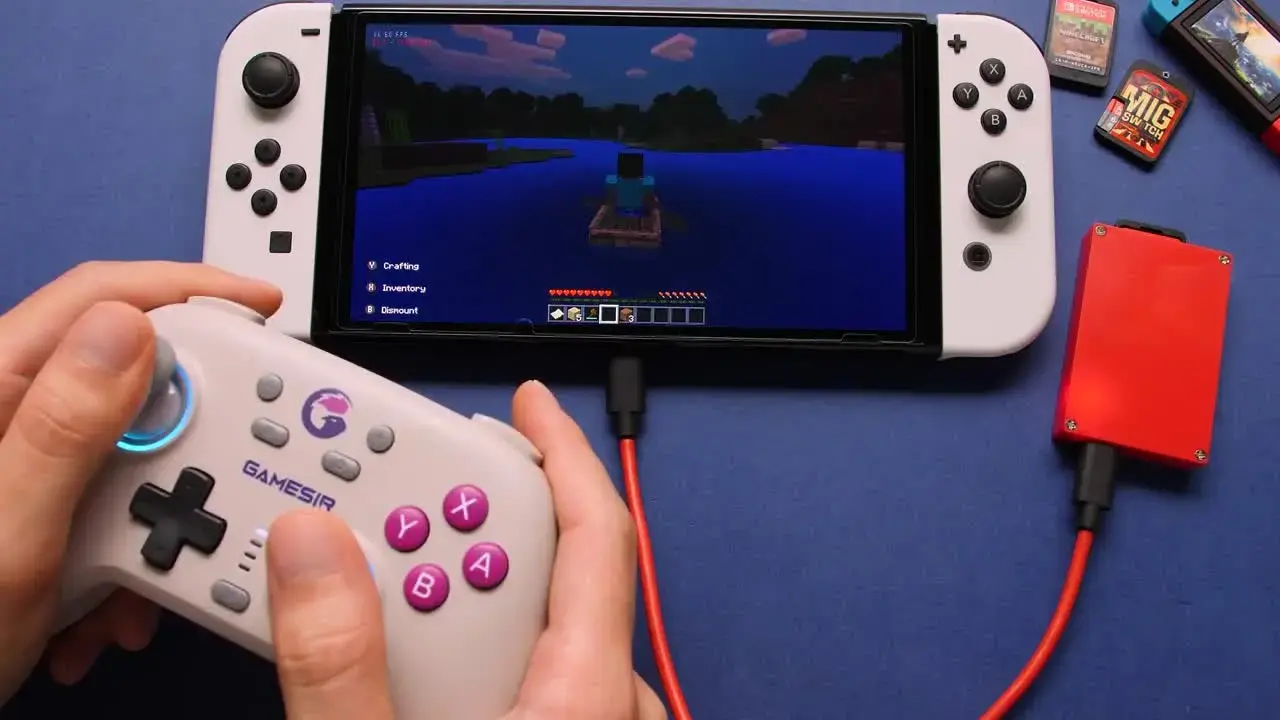That’s so weird. This isn’t about Nintendo hardware sucking: it’s running on an actual Nintendo Switch, except instead of it using the Switch’s OS and it running the game, it goes Linux -> Emulator (yuzu) -> game (running from an actual cart through a dumper) and somehow that’s faster.
It’s a software issue.
Is it the Nintendo Switch OS which is needlessly bloated? It does nothing, how can it be heavier than an actual Linux Distribution?
I’m not familiar with how the Switch works, but the dumper has a FPGA for decoding the cartridge. Is this something that the Switch has to do in real time in software, and maybe that’s where the performance loss comes from? It seems unlikely but I know nothing of the Switch’s internals or software. In fact let’s just say I know nothing at all, I’m just an idiot.
PS: Everyone who buys used Switch games should see this until the end. The dumper allows you to extract a certificate file from a cartridge. Basically, someone malicious could buy a new game, dump it including the certificate file, clone it, and resell the game. Then they would be able to play online with it. If you buy the original copy afterwards and play online, you are likely going to be the one whose certificate is flagged as fake, leading to you being banned.
Also, they could just sell multiple copies of cloned games and you wouldn’t be able to tell the difference… Except for the certificate, which would be the same and would signal Nintendo that you (and like 10 other people) are playing a fake game, unbeknownst to you.
It does nothing, how can it be heavier than an actual Linux Distribution?
Are you sure about that? Data mining, even to the extents that take toll on user experience, is a common thing in consumer electronics
To be honest I naively assumed Nintendo not to be the type of company (… Or even competent enough) to implement the type of data mining that would impact performance lol
I have seen the phrase “the Switch is a telemetry nightmare” on CFW websites
Is it the Nintendo Switch OS which is needlessly bloated? It does nothing, how can it be heavier than an actual Linux Distribution?
AFAIK the OS is based on a microkernel and the modules are rather small, so there’s probably a lot of overhead for IPC. Also I guess the power management is quite aggressive to increase battery life and lower heat.
Yeah power management is the most likely culprit here. What is not shown is his battery life and thermals which I suspect are deplorable.
I remember there being a mod for cfw that unlocked a manual power setting slider and the results were similar.
Additionally, as a high level emulator Yuzu sacrifices some accuracy for speed. It’s possible that this allows it to also be faster than the official implementation.
Contrary to popular opinion, i’m gonna guess graphics driver. Specifically the shader compiler.
This is actually not surprising to me. I heard that Windows used to perform better on a virtual machine with a Linux host. The Linux kernel is very mature, and virtual machines (or emulators) use tricks to improve performance.
This has been big on some of AMD’s workstation and server chips because Windows generally doesn’t know what to do with the unexpected NUMA Node layouts. Or the scheduler just can’t handle 128 cores. So abstracting that away with Linux’s superior scheduler can help significantly on certain hardware
I think a bigger factor is the memory and resources reserved for the account system / store / online services, etc. But also, yeah the emulator might be more efficient on a few calls
At that point why not run the Java version when you’re using Linux anyway? Java apps run great on Linux (compared to Windows) and this also allows them to use the Fabric based performance mods too which would boost it even more.
Sure, this makes sense for Minecraft, and the video itself only compared Minecraft (for fear of being struck by the Nintendo Ninjas, which is an interesting fear considering everything else in the video). I’d love to see if other games, like BoTW or Pokémon S/V, have similar performance enhancements.
One look at the Switch store app says everything about how sub-optimal the OS is
Feeling inspired, I set out to push the limits of recursive emulation myself. My first step was getting a Linux emulator running inside Minecraft. Yes, you heard me right - Linux running inside Minecraft. Once I had achieved that, the natural progression was to install Yuzu on this virtual version of Linux. It took some trial and error, but eventually, I managed to do just that.
At this point, I could hardly contain my excitement. The results were impressive; the performance increase was noticeable compared to previous iterations. But for me, that wasn’t enough. I wanted more. So, in true recursion fashion, I installed another Linux emulator within this Minecraft-embedded Yuzu environment. This new iteration had its own Yuzu setup, and thus the cycle continued.
As layers upon layers of nested Linux environments grew, the performance kept improving exponentially. Every time I upgraded the recursion level, the FPS went through the roof. Eventually, it reached unbelievable heights. Today, with multiple levels of recursion, I am proud to announce that the performance of this nestled setup is now over 9000 FPS!
Now run an emulator within an emulator for extra acceleration.

Unironically doubly accurate meme because in that movie time ran faster in dreams within dreams
Which is very embarrassing for N but expected from them nonetheless.
N doesn’t give a fuck about embarrassing outdated hardware.
Children and shills will still support them
This isn’t about hardware, though. The experiment was performed on a Switch.
deleted by creator
wait for the lawsuit from nintendo to show up in your mail.
Don’t worry, Nintendo will make a switch 2 and all the problems will be fixed!
/s
Interesting. I wonder if it’s a universal thing that’ll happen to varying degrees on any game, or specific to Minecraft (or ones in whatever necessary way “similar”) with other games performing better natively
is this really an emulator in the traditional sense? (implementing certain hardware architecture using software) or are they just implementing some software to read and run games in the host hardware? I would be very surprised if this was a true emulator, but I have no idea about the current scenario.
deleted by creator









